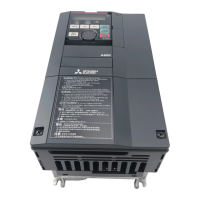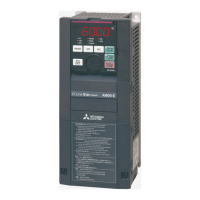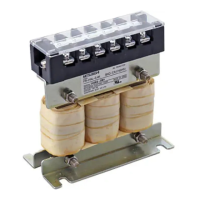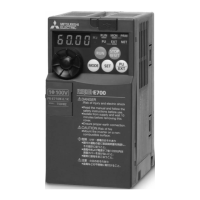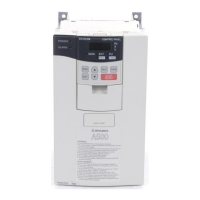9
Installation of the inverter and
enclosure design
1.4.2 Cooling system types for inverter enclosure
From the enclosure that contains the inverter, the heat of the inverter and other equipment (transformers, lamps,
resistors, etc.) and the incoming heat such as direct sunlight must be dissipated to keep the in-enclosure temperature
lower than the permissible temperatures of the in-enclosure equipment including the inverter.
The cooling systems are classified as follows in terms of the cooling calculation method.
1) Cooling by natural heat dissipation from the enclosure surface (Totally enclosed type)
2) Cooling by heat sink (Aluminum fin, etc.)
3) Cooling by ventilation (Forced ventilation type, pipe ventilation type)
4) Cooling by heat exchanger or cooler (Heat pipe, cooler, etc.)
1.4.3 Inverter placement
(1) Installation of the Inverter
Cooling System Enclosure Structure Comment
Natural
cooling
Natural ventilation
(Enclosed, open type)
Low in cost and generally used, but the enclosure size
increases as the inverter capacity increases. For
relatively small capacities.
Natural ventilation
(Totally enclosed type)
Being a totally enclosed type, the most appropriate for
hostile environment having dust, dirt, oil mist, etc. The
enclosure size increases depending on the inverter
capacity.
Forced
cooling
Heatsink cooling
Having restrictions on the heatsink mounting position
and area, and designed for relative small capacities.
Forced ventilation
For general indoor installation. Appropriate for
enclosure downsizing and cost reduction, and often
used.
Heat pipe Totally enclosed type for enclosure downsizing.
Installation on the enclosure
00620 or less 00770 or more
INV
CAUTION
When encasing multiple inverters, install them in parallel as
a cooling measure. Install the inverter vertically.
Vertical
*
*Refer to the clearances on the next page.
Fix six positions for the FR-F740-
04320 to 08660 and fix eight positions
for the FR-F740-09620 to 12120.

